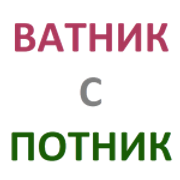IRA написа:Kan_Tangra написа:Ти си теглила заем, който си била длъжна да върнеш.
Без да напускаш въпросната фирма, и без да напускаш ролята си в общия публичен фонд за дадения момент.
А тегленето (на заем) с цел финансиране на първо жилище е отделно регламентирано.
Колкото до документите, първата ми работа като вляза в нова фирма е, да намеря къде да се подпиша за такива благини. И сега един от бонусите е подобен, в акции, но се включваш на всеки 6 месеца. И ще трябва да чакам декември.
Друг бонус е ретеншън, но за него ще трябва да чакам 12 месеца.

Ама не си длъжен да върнеш, може и да не го върнеш, ако не ги върнеш ще платиш данък. Като напуснах фирмата си прехвърлих парите при един приятел.
Не знам защо казващ ,че трябва да минат 2 години зада станат твои парите и това е по закон. Множеби зависи от плана които имаш. Защо казваш, че е публичен план?:
Аз намирам това :
Your RRSP belongs entirely to you.
At any time, you can monitor the status of your
investments, make additional contributions,
change your asset allocation, use your account
to finance the purchase of your first home,
or add other investment vehicles, such as a
TFSA or a RESP
roumensp написа:
Спогодбите са само за пенсия доколкото знам.
Квебек не е част от тая спогодбата.
Наричам го публичен, защото това са 2та вида.
Прайвът и Пъблик.
Ако ти сам си внасяш ррсп е прайвът. Ако работодател внася, е в пъблик план.
Пъблика е 2 вида.
1. Public RRSP
2. Public DPSP
Работодателя ти внася твоите 5 или 6% в 1. Public RRSP
А неговия 5-6% match, ги внася в 2. Public DPSP
Ако напуснеш работа, нямаш право нито на 1, нито на 2, затова даваш заявка в кой PRIVATE RRSP, да ги прехвърлят. Ако не избереш, инвест компанията ти вади един неин private и ти ги прехвърля там.
Съгласно Квебекския закон, 2. Public DPSP, не са vested, минимум за 2 години.
Един вид, като протекция за работодателя, обратна ретеншън гаранция.
Така като не са вестед, не могат да се пипат, те са заключени.
Ако напуснеш работа преди тия 2г, парите автоматично се пращат на работодателя. Дори май автоматизиран софтуер го прави.
Ако напуснеш работа след тия 2г, парите автоматично се прехвърлят в 1. Public RRSP,
а оттам в Private RRSP, по твой избор. (или могат и да се теглят)
http://www.cra-arc.gc.ca/E/pub/tg/t4040/t4040-e.html"
Deferred profit-sharing plan (DPSP) – an employer-sponsored plan we register, in which the employer shares the profits of a business with all the employees or a designated group of employees.
Registered disability savings plan (RDSP) – a trust arrangement between an individual (the holder) and a trust company in Canada (the issuer) that provides for the long-term financial security of a beneficiary who has a prolonged and severe mental or physical impairment.
Registered education savings plan (RESP) – a registered contract between an individual (the subscriber) and a person or organization (the promoter). The subscriber generally makes contributions to the RESP, which earns income, paid in the form of educational assistance payments to one or more identified beneficiaries.
Registered pension plan (RPP) – a pension plan that we have registered. Funds are contributed by an employer, or by an employer and employees, to provide a pension to employees when they retire.
Registered retirement income fund (RRIF) – a fund you establish with a carrier and that we register. You transfer property to the carrier from an RRSP, a PRPP, an RPP, an SPP, or from another RRIF, and the carrier makes payments to you.
Registered retirement savings plan (RRSP) – a retirement savings plan that you establish, that we register, and to which you or your spouse or common-law partner contribute. Any income you earn in the RRSP is usually exempt from tax as long as the funds remain in the plan. You generally have to pay tax when you receive payments from the plan.
Deferred Profit Sharing Plan (DPSP)
DPSPs are contracts under which employers share a portion of their profits with their employees. The employees cannot be major company shareholders. Only employers contribute to DPSPs, and the contribution is determined according to the company's profits.
http://www.rrq.gouv.qc.ca/en/flashretra ... e_008.aspx"
Only in rare occasions does a DPSP allow employees to withdraw funds while still working for their employers. Funds accumulated in a DPSP may be paid out either in a lump sum or in multiple payments over a period not exceeding 10 years, used to purchase an annuity from an insurer, or transferred directly into an RRSP or SPP.
http://events.snwebcastcenter.com/manul ... e11762.pdf"
Can you withdraw money from the
plan while employed?
Thewithdrawal of vested amounts may be permitted
by your employer subject to the terms of the
Summary of main provisions applicable to the DPSP.
Any cashwithdrawals permittedwill be fully taxable
under the provisions of the Income Tax Act (Canada).
What happens if you terminate
employment?
If you terminate employment or cease to be
eligible under the plan, your active membership
in the plan is terminated and no further
contributions are permitted.
If you have been a member of the plan for at
least two years on your date of termination, you
are vested and will be entitled to receive the
balance credited to your account under the plan
within 90 days of the date of your termination.
If your employer has selected an earlier vesting
provision for the DPSP, it will be described in the
Summary of main provisions applicable to your
DPSP. Any non-vested amounts will be forfeited
and returned to the employer in cash, used to
offset future employer contributions or used to
increase benefits for members of the plan.
Deferred Profit Sharing Plan (DPSP) 02/03
Upon termination of employment you will be
informed about the various options that are
available to you. If you do not select a method for
disbursement of your funds under the DPSP within
the specified time frame, Standard Life may, at
its discretion, automatically transfer your funds
to a group Registered Retirement Savings Plan
sponsored by the Standard Life Trust Company




